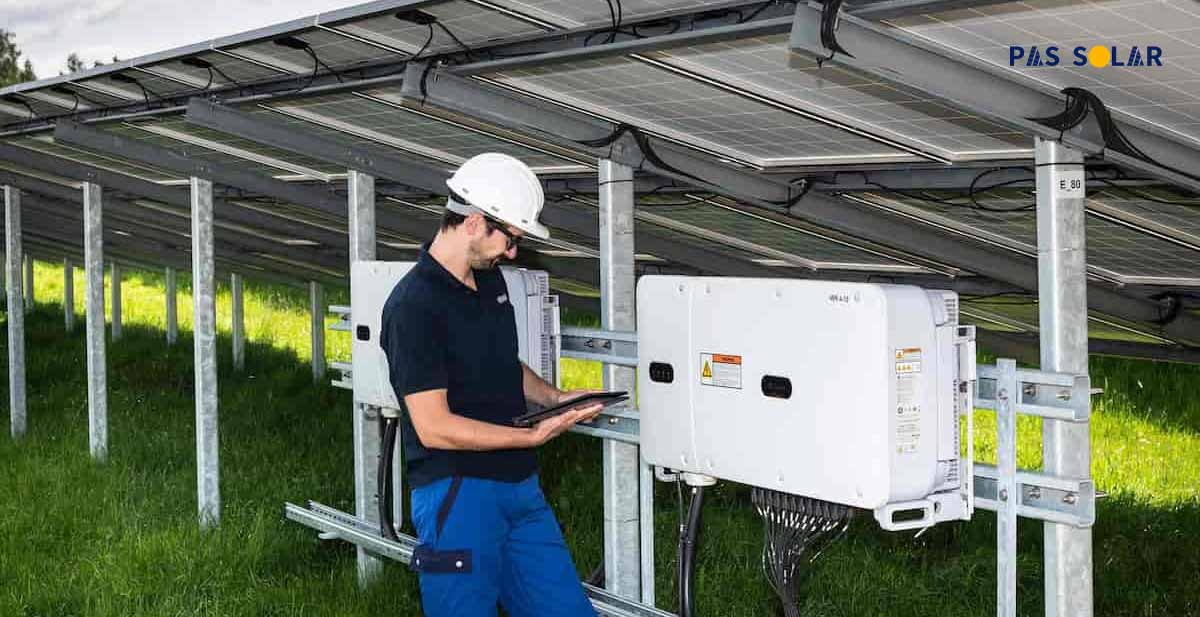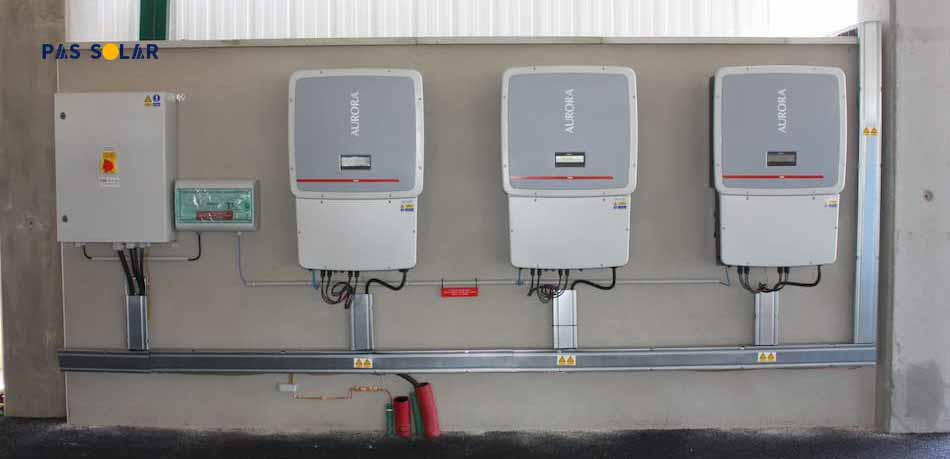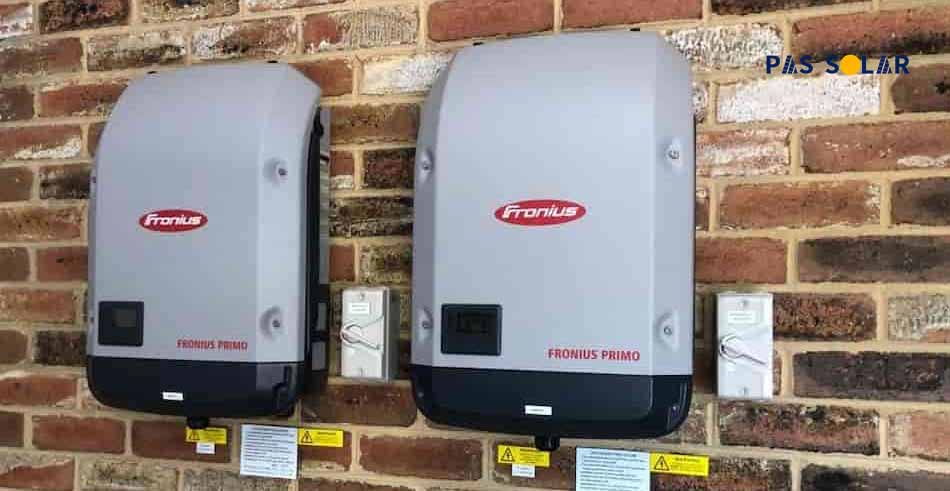Solar inverters are one of the most vital parts of a solar power system. They are responsible for converting direct current (DC) electricity from your solar panel suppliers in Dubai into alternating current (AC) electricity to power your appliances. When it comes to designing your solar panel system, choosing the right size inverter will play a significant role in overall electricity production. In this article, we will discuss what affects solar inverter dimensions, and if you were asking yourself what size inverter do I need for solar panels, by the end of this article you’d know the answer.
How to choose solar inverter size
Solar inverter sizes can be large or small. Same as solar panels, the size of an inverter can be rated in watts (W). When it comes to solar inverter sizing, installers will consider three main factors: the size of your solar panel, your geography, and specific site conditions.
Choosing the right size inverter relies on solar panel size
The size of your solar panel is the most important factor in determining the proper size for your solar inverter. Because your solar inverter converts DC electricity coming from the array, it must be able to handle all the power the array produces.
As a general rule, the solar panel inverter size should be similar to the DC rating of your solar panel system; If you are installing a 6 kilowatt (kW) system, you can expect the proposed inverter to be around 6000W, plus or minus a few percent.
The manufacturers of the solar inverter price in UAE typically list size guidelines for the array capacity their inverters can be paired with on their product specification sheets. If the size of the solar array paired with your inverter is outside of established guidelines, manufacturers may void their warranty offer.
Location of inverter installation
Geography also plays an important role in choosing the right size inverter due to its impact on the output of your solar panel system. Properties in Dubai have higher solar irradiances than properties in other areas.
In areas with more sunlight and moderate temperatures, inverters are likely to be sized closer to the overall wattage of the solar array so that they can handle near the max power output of the array at any particular time.
Site-specific factors for choosing the right size inverter
Site specifications and the design of your solar panel will affect the size of your solar inverter. Similar to geography, the tilt and azimuth at which solar panels are installed will affect the amount of electricity the system can produce. Environmental factors will also play a role in how much sunlight reaches the array.
Solar installers will factor in these considerations, equipment efficiencies, and more when estimating the overall output of your solar panel system. It will all contribute to your system’s overall reduction factor, which is used to help determine what your solar panel system will produce in a real-life scenario.
Solar panel systems that experience more shading, and have a suboptimal tilt or face east instead of the south have higher reduction factors than systems on sunny, south-facing roofs.
Solar panel systems with higher power reduction factors will not reach their maximum power output and as such can afford smaller inverter capacities relative to array size.
Calculations for choosing the right size inverter
The size of your solar inverter can be larger or smaller than the DC rating of your solar panel, up to a point. The array-inverter ratio of a solar panel system is the DC rating of your solar array divided by the maximum AC output of your inverter. For example, if your array is 6kW with a 6000W inverter, the array-to-inverter ratio is 1.
If you install the same size array with a 5000W inverter, the ratio is 1.2. Most installations will have a ratio between 1.15 and 1.25; Inverter manufacturers and solar system designers typically do not recommend a ratio greater than 1.55.
A higher array-to-inverter ratio may work for your system if your solar panels are not producing their full power output due to the factors mentioned above. The benefit of oversizing your solar panel relative to inverter capacity is that lower-powered inverters will be less expensive than their larger counterparts.
It’s important to know exactly the kind of inverter you should buy. You can get Off Grid Solar Inverter supplier Dubai from Pas Solar, which are right for your solar power system.
But it is not advisable to oversize the matrix too much, as it can cause clipping. Clipping occurs when your solar panels produce too much DC for the inverter to handle at any one time. When this happens, the inverter will limit the amount of power it is converting, which will cause power losses from your solar panel system.
Find a qualified solar installer at Pas Solar
In this solar inverter sizing guide, we tried to tell you about the basics of choosing the right size inverter. But, the best way to ensure that your solar inverter is the right size is to work with a reputable and qualified solar installer.
You can call our solar equipment shop in Dubai and get help from vetted and pre-selected installers. These approved installers will use design tools to make sure your solar panel and inverter are the right size for your energy needs, solar equipment, property, and location.





